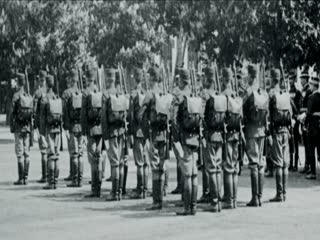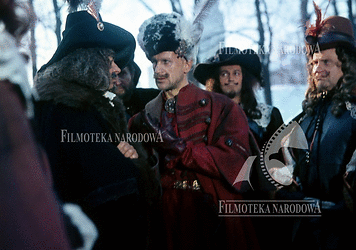Kokoelmat
 >>View collection From its holdings related to the First World War the Federal Archives / Bundesarchiv-Filmarchiv Berlin makes available twenty hours of film material.
>>View collection From its holdings related to the First World War the Federal Archives / Bundesarchiv-Filmarchiv Berlin makes available twenty hours of film material.
Amongst them different genres such as newsreels – „Messter-Woche“, partly tinted, short documentaries – „Bilder aus der großen Schlacht“ (Pictures of the great Battle in the West), part one to six.
 >>View collection The CNC French Film Archives gives access to over 100 films related to the First World War. These include films produced both during the war – although authorities were quick to exploit the film industry – and in the post-war period.
>>View collection The CNC French Film Archives gives access to over 100 films related to the First World War. These include films produced both during the war – although authorities were quick to exploit the film industry – and in the post-war period.
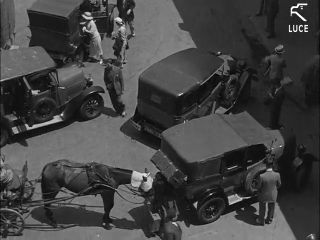 >> View collection 3,000 items from a unique collection of cinematographic non-fiction and fiction works, since the silent film era to our days, black and white and colored, short and long, featuring titles of different topics from history to culture, by a myriad of directors, including, among them the first works of great masters like Rossellini, Antonioni, Comencini, De Seta, and other famous names of Italian filmmaking.
>> View collection 3,000 items from a unique collection of cinematographic non-fiction and fiction works, since the silent film era to our days, black and white and colored, short and long, featuring titles of different topics from history to culture, by a myriad of directors, including, among them the first works of great masters like Rossellini, Antonioni, Comencini, De Seta, and other famous names of Italian filmmaking.
 >> View collection Around 14,000 items from one of the most famous Italian newsreel series have been included in the EFG, covering Italian cultural, social and political events from 1946 to 1965. The newsreel collection in its whole portrays the development of Italy in this time period.
>> View collection Around 14,000 items from one of the most famous Italian newsreel series have been included in the EFG, covering Italian cultural, social and political events from 1946 to 1965. The newsreel collection in its whole portrays the development of Italy in this time period.
 >> View collection Around 350,000 photos from Luce’s diverse collections (fondi, in Italian) have been selected out of some 3,000,000 photos that belong to Luce’s Historical Archive. Photos date from the years of fascism until the end of the seventies. Covering almost all the topics of Italian life, from landscapes, to politics, war, social life, cultural events, famous people and more, special care in the selection process has been dedicated to film-related events and the Italian dolce vita with all its famous people and events.
>> View collection Around 350,000 photos from Luce’s diverse collections (fondi, in Italian) have been selected out of some 3,000,000 photos that belong to Luce’s Historical Archive. Photos date from the years of fascism until the end of the seventies. Covering almost all the topics of Italian life, from landscapes, to politics, war, social life, cultural events, famous people and more, special care in the selection process has been dedicated to film-related events and the Italian dolce vita with all its famous people and events.
In this collection, one can find a cinematographic cartography of Portugal and the political events, from the monarchy to the republican revolution; the arrival of the aviation pioneers after the first aerial crossing of the South Atlantic and a football match or a car race; a visit to the zoo and the funerals of a great Poet. But also some aspects of life overseas: the industry and agriculture in São Tomé, the Dala Falls in Angola, or a trip to Mozambique. Along with the moving images, one can also find the works on paper on this same subject: a photo of the directors, an interview, a poster of the film, a review published in a film magazine, letters from a producer to the distribution companies or a set of intertitles.
 >> View collection The Cinémathèque française’s collection of magic lantern slides illustrates the pre-cinema era and contains some of the finest and most well-preserved slides still in existence. A selection of around 1,500 of these hand-painted and photographic unique artworks from France, Great Britain, Germany and the USA covering the 18th century until the 1920s is available on EFG.
>> View collection The Cinémathèque française’s collection of magic lantern slides illustrates the pre-cinema era and contains some of the finest and most well-preserved slides still in existence. A selection of around 1,500 of these hand-painted and photographic unique artworks from France, Great Britain, Germany and the USA covering the 18th century until the 1920s is available on EFG.
 >> View collection The Triangle Film Corporation existed from 1915 to 1918. Employing directors such as D.W. Griffiths, Thomas Ince and Mack Sennet it was on of the largest American production companies at its time. By means of around 1,400 photos of the John E. Allen – Triangle Collection, the history of the company can be retraced on EFG.
>> View collection The Triangle Film Corporation existed from 1915 to 1918. Employing directors such as D.W. Griffiths, Thomas Ince and Mack Sennet it was on of the largest American production companies at its time. By means of around 1,400 photos of the John E. Allen – Triangle Collection, the history of the company can be retraced on EFG.
 >> View collection La Cinémathèque française has a precious book collection which retraces the long adventure of the prehistory of the cinema and photographic and film techniques. The approximately 280 books of this collection date back to the 17th century and can be found on EFG.
>> View collection La Cinémathèque française has a precious book collection which retraces the long adventure of the prehistory of the cinema and photographic and film techniques. The approximately 280 books of this collection date back to the 17th century and can be found on EFG.
 >> View collection The scientist Étienne-Jules Marey (1830 - 1904) used photographic methods to study the movement of human and animal throughout his life. La cinémathèque offers access to around 400 photos from the estate of Étienne-Jules Marey via EFG.
>> View collection The scientist Étienne-Jules Marey (1830 - 1904) used photographic methods to study the movement of human and animal throughout his life. La cinémathèque offers access to around 400 photos from the estate of Étienne-Jules Marey via EFG.
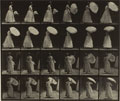 >> View collection With the serialisation of photos Eadward Muybridge was one of the first who created the impression of moving images. EFG gives access to about 700 images that emanate from the estate of Muybridge.
>> View collection With the serialisation of photos Eadward Muybridge was one of the first who created the impression of moving images. EFG gives access to about 700 images that emanate from the estate of Muybridge.
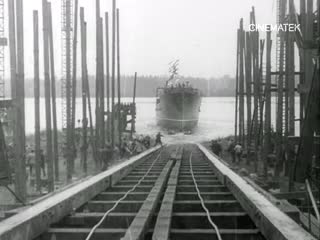 >>View collection The CINEMATEK World War One collection contains a large variety of newsreels, documentary and feature films, mostly produced in the decade after the war. The images include representations of Belgium ("Poor Little Belgium") as a victim of the 'Great War', the fate and suffering of women during the war or the Flemish emancipation and how films mainly produced by Clemens De Landtsheer contributed to the myth of the Flemish soldier on the Yser.
>>View collection The CINEMATEK World War One collection contains a large variety of newsreels, documentary and feature films, mostly produced in the decade after the war. The images include representations of Belgium ("Poor Little Belgium") as a victim of the 'Great War', the fate and suffering of women during the war or the Flemish emancipation and how films mainly produced by Clemens De Landtsheer contributed to the myth of the Flemish soldier on the Yser.
 From the 1960s to the 1990s, the Italian company Corona Cinematografica produced documentary films, animated films, and newsreels. For many greater or lesser directors, Corona Cinematografica provided a kind of gymnasium in which to acquire the craft or consolidate already honed competence. Around 150 items from the Corona collection have been included in EFG. Furthermore, CCB makes available a number of restored early silent films, fiction of various genres and documentaries.
From the 1960s to the 1990s, the Italian company Corona Cinematografica produced documentary films, animated films, and newsreels. For many greater or lesser directors, Corona Cinematografica provided a kind of gymnasium in which to acquire the craft or consolidate already honed competence. Around 150 items from the Corona collection have been included in EFG. Furthermore, CCB makes available a number of restored early silent films, fiction of various genres and documentaries.
This collection is not yet searchable via the EFG. Please check back soon.
>> View collection Cineteca di Bologna provides access to a series of silent films restored by them.
 >> View collection This collection contains around 6.500 digitised film-censorship related documents from Austria, Czechoslovakia and Germany in the 1920s and 1930s. The documents had been assembled from various film and state archives by Deutsches Filminstitut – DIF, Filmarchiv Austria and Národní filmový archiv in the framework of the EU-funded project "COLLATE: Collaboratory for Annotation, Indexing and Retrieval of Digitized Historical Archive Material".
>> View collection This collection contains around 6.500 digitised film-censorship related documents from Austria, Czechoslovakia and Germany in the 1920s and 1930s. The documents had been assembled from various film and state archives by Deutsches Filminstitut – DIF, Filmarchiv Austria and Národní filmový archiv in the framework of the EU-funded project "COLLATE: Collaboratory for Annotation, Indexing and Retrieval of Digitized Historical Archive Material".
.jpg) >> View collection The complete collection of Danish Silent Film Programmes from the Danish Film Institute is a unique resource both to surviving films, but also to the narrative content of films that no longer exist. This collection gives an insight to scholars, enabling a broader insight into the types of films that were made and distributed, even if the films themselves did not survive. As marketing material it is also an invaluable resource for academic research in fan and film culture. Read more about the Danish contribution to EFG on DFI's website.
>> View collection The complete collection of Danish Silent Film Programmes from the Danish Film Institute is a unique resource both to surviving films, but also to the narrative content of films that no longer exist. This collection gives an insight to scholars, enabling a broader insight into the types of films that were made and distributed, even if the films themselves did not survive. As marketing material it is also an invaluable resource for academic research in fan and film culture. Read more about the Danish contribution to EFG on DFI's website.
 >> View collections on EFG The collection of the Danish Film Institute available on EFG contains a number of early documentary films, which display the life and look of the Danish society in the period of 1906 to 1940. Among the 300 films are straight depictions of modern production equipment and trade, as well as more propagandistic titles and news items. The over 50 early fiction films available are a raw collection of short films that give an impression of what early audiences were entertained by. In addition, around 700 teaser previews of the films available in the Danish Film Institute's educational distribution can be found on EFG. The latter collection contains current films that are chosen mainly for their value in education and general audience informative qualities. Read more about the Danish Film Institute's contribution to EFG on DFI's website.
>> View collections on EFG The collection of the Danish Film Institute available on EFG contains a number of early documentary films, which display the life and look of the Danish society in the period of 1906 to 1940. Among the 300 films are straight depictions of modern production equipment and trade, as well as more propagandistic titles and news items. The over 50 early fiction films available are a raw collection of short films that give an impression of what early audiences were entertained by. In addition, around 700 teaser previews of the films available in the Danish Film Institute's educational distribution can be found on EFG. The latter collection contains current films that are chosen mainly for their value in education and general audience informative qualities. Read more about the Danish Film Institute's contribution to EFG on DFI's website.
_mp2.jpg) >> View collection The Danish Film Institute gives access to documentary footage and films as well as fiction films from the period 1914-1918. The documentary collection contains both general "news" items from the period, with events and actuality items, but also some of the earliest footage from the German captured territories in Northern France and Prussia.
>> View collection The Danish Film Institute gives access to documentary footage and films as well as fiction films from the period 1914-1918. The documentary collection contains both general "news" items from the period, with events and actuality items, but also some of the earliest footage from the German captured territories in Northern France and Prussia.
 >> View collection The Danish Film Institute's Poster Collection includes posters from the earliest surviving, Morfinisten from 1912, to the posters of current films. The collection is both a scholarly resource showing the development of poster art, but also a visual pleasure to browse, as these artifacts were meant to create instant attraction to the film. The posters are often works of art in themselves. Read more about the Danish Film Institute's contribution to EFG on DFI's website.
>> View collection The Danish Film Institute's Poster Collection includes posters from the earliest surviving, Morfinisten from 1912, to the posters of current films. The collection is both a scholarly resource showing the development of poster art, but also a visual pleasure to browse, as these artifacts were meant to create instant attraction to the film. The posters are often works of art in themselves. Read more about the Danish Film Institute's contribution to EFG on DFI's website.
 >> View collection The EFG displays over 45,000 film stills illustrating more than a century of Danish film production. The vast collection provides insight into the visual quality and style of Danish cinema, from early silent films starring Asta Nielsen to recent works by internationally acclaimed directors such as Susanne Bier and Lars von Trier. Read more about the Danish Film Institute's contribution to EFG on DFI's website.
>> View collection The EFG displays over 45,000 film stills illustrating more than a century of Danish film production. The vast collection provides insight into the visual quality and style of Danish cinema, from early silent films starring Asta Nielsen to recent works by internationally acclaimed directors such as Susanne Bier and Lars von Trier. Read more about the Danish Film Institute's contribution to EFG on DFI's website.
 >> View collection The 77 films by Danish cinema pioneer Peter Elfelt (1866-1931) are not only interesting from a cinematic point of view but they are also unique contemporary documents. As royal court photographer, Elfelt had access to the most important people and events at his time, which is reflected by his films, focusing on Denmark's high society.
>> View collection The 77 films by Danish cinema pioneer Peter Elfelt (1866-1931) are not only interesting from a cinematic point of view but they are also unique contemporary documents. As royal court photographer, Elfelt had access to the most important people and events at his time, which is reflected by his films, focusing on Denmark's high society.
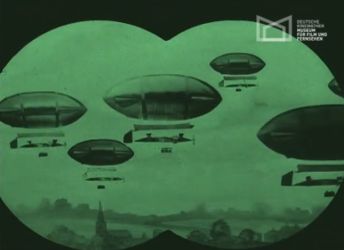
>>View collection The World War One collection from the archives of the Deutsche Kinemathek contains over thirty films as well as other film-related material such as film related documents, posters and film stills.
 >> View collection The corpus of films digitised by DIF within the framework of EFG1914 is largely composed of non-fiction material such as newsreels, documentaries, propaganda films, and amateur footage. Fictional films make up a smaller part of the material and include, beyond feature films, some “Tonbilder” (sound pictures) – short films that were synchronously accompanied by a gramophone record in cinema.
>> View collection The corpus of films digitised by DIF within the framework of EFG1914 is largely composed of non-fiction material such as newsreels, documentaries, propaganda films, and amateur footage. Fictional films make up a smaller part of the material and include, beyond feature films, some “Tonbilder” (sound pictures) – short films that were synchronously accompanied by a gramophone record in cinema.
 >> View collection Founded by film producer Artur Brauner (*1918) in 1946, the Central Cinema Company (CCC) was one of the largest and most important film production companies of the German post-war era. The company archive held in the German Film Institute comprises around 4,000 folders of CCC's production material. On the EFG, approx. 1,150 digitised documents and 1,900 photos from the CCC’s archive can be viewed. Among them script drafts, screenplays, dialogue lists, correspondence, a variety of production documents and reports, promotional material, film stills and set photos, providing unique insights into CCC’s company structure and into over forty years of work routine.
>> View collection Founded by film producer Artur Brauner (*1918) in 1946, the Central Cinema Company (CCC) was one of the largest and most important film production companies of the German post-war era. The company archive held in the German Film Institute comprises around 4,000 folders of CCC's production material. On the EFG, approx. 1,150 digitised documents and 1,900 photos from the CCC’s archive can be viewed. Among them script drafts, screenplays, dialogue lists, correspondence, a variety of production documents and reports, promotional material, film stills and set photos, providing unique insights into CCC’s company structure and into over forty years of work routine.
 More than 200 set designs and 900 film costume designs, sketches and notes by distinguished German (film) architects Otto Hunte, Walter Reimann and Hans Poelzig and costume designers such as Ali Hubert, Helga Kischkat-Reuter and Irms Pauli can now be accessed via the EFG. Many of the design sketches represent milestones in their field, e.g. the set designs for “Metropolis” (1925/26) or “Der Golem wie er in die Welt kam” (1920).
More than 200 set designs and 900 film costume designs, sketches and notes by distinguished German (film) architects Otto Hunte, Walter Reimann and Hans Poelzig and costume designers such as Ali Hubert, Helga Kischkat-Reuter and Irms Pauli can now be accessed via the EFG. Many of the design sketches represent milestones in their field, e.g. the set designs for “Metropolis” (1925/26) or “Der Golem wie er in die Welt kam” (1920).
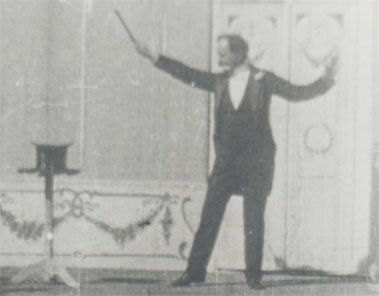 >> View collection Julius Neubronner (1852-1932), a chemist and inventor from Kronberg was one of the first people to film in the Rhine-Main region in Germany. He purchased his first camera in 1903, a "Kino" manufactured by Dresdner Foto-Firma. With his camera Neubronner recorded historical events as well as the everyday life of his family. Furthermore, he also shot short sketches performed by himself and his family on a stage set-up in the garden of their home.
>> View collection Julius Neubronner (1852-1932), a chemist and inventor from Kronberg was one of the first people to film in the Rhine-Main region in Germany. He purchased his first camera in 1903, a "Kino" manufactured by Dresdner Foto-Firma. With his camera Neubronner recorded historical events as well as the everyday life of his family. Furthermore, he also shot short sketches performed by himself and his family on a stage set-up in the garden of their home.
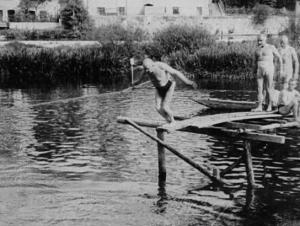 >> View collection Since the 1910s, Oskar Barnack – inventor of the "Leica" camera – has documented the activities around Wetzlar (Germany) with his self-constructed camera. He filmed floods and town fairs, medical experiments, sporting events and the company that employed him as a chief engineer: the Optical Works Ernst Leitz in Wetzlar.
>> View collection Since the 1910s, Oskar Barnack – inventor of the "Leica" camera – has documented the activities around Wetzlar (Germany) with his self-constructed camera. He filmed floods and town fairs, medical experiments, sporting events and the company that employed him as a chief engineer: the Optical Works Ernst Leitz in Wetzlar.
 View collection From 1969 to 1974, camera man and photographer Peter Gauhe worked closely with German director Rainer Werner Fassbinder. Over 4,000 digitised set photos and film stills document the shooting of such films as “Händler der vier Jahreszeiten” and “Angst essen Seele auf”.
View collection From 1969 to 1974, camera man and photographer Peter Gauhe worked closely with German director Rainer Werner Fassbinder. Over 4,000 digitised set photos and film stills document the shooting of such films as “Händler der vier Jahreszeiten” and “Angst essen Seele auf”.
 >>View collection Estonian Film Archives is giving access to 6 films and about 2,500 photos.
>>View collection Estonian Film Archives is giving access to 6 films and about 2,500 photos.
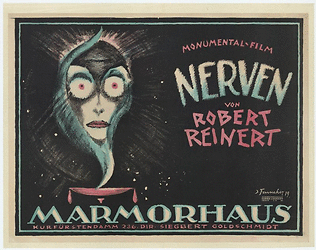 >> View collection For the EFG1914 project, EYE is contributing more than 300 film items totaling about 100 hours, and more than 900 film posters from the 1910s.
>> View collection For the EFG1914 project, EYE is contributing more than 300 film items totaling about 100 hours, and more than 900 film posters from the 1910s.
 >> View collection Most of the posters EYE is contributing for EFG1914 are part of the Desmet Collection. Jean Desmet was a pioneer film distributor whose business went into bankruptcy around 1916, due to the economic effects of the WWI. Until then, Desmet tried to trade with all kinds of film companies from all over the world, and kept his papers and promotional material for the rest of his life.
>> View collection Most of the posters EYE is contributing for EFG1914 are part of the Desmet Collection. Jean Desmet was a pioneer film distributor whose business went into bankruptcy around 1916, due to the economic effects of the WWI. Until then, Desmet tried to trade with all kinds of film companies from all over the world, and kept his papers and promotional material for the rest of his life.
 On the European Film Gateway, the Filmarchiv Austria presents 1000 clips from the "Austria Wochenschau" (1949 – 1994), a newsreel collection which forms today a substantial starting point for Austria’s documented audiovisual contemporary history.
On the European Film Gateway, the Filmarchiv Austria presents 1000 clips from the "Austria Wochenschau" (1949 – 1994), a newsreel collection which forms today a substantial starting point for Austria’s documented audiovisual contemporary history.

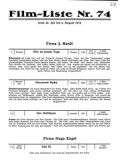 >> View collection „Paimann’s Filmlisten”, literal „Paimann's Film Lists“, was an Austrian film review journal founded by Franz Paimann. The periodical listed all new films released in Austria between 1916 and 1965. That includes all feature films which were distributed in Austria, including foreign production and non-fictional motion pictures. Each entry contains a synopsis, credit details and a rating. The first issue of „Paimann's Film Lists“ appeared 1916, at that time mere newsletters designated for Austrian cinema owners only. Starting from 1921 until 1965 „Paimann's Film Lists“ became a weekly journal. From February 1943 until January 1946 the periodical was not authorized for publication.
>> View collection „Paimann’s Filmlisten”, literal „Paimann's Film Lists“, was an Austrian film review journal founded by Franz Paimann. The periodical listed all new films released in Austria between 1916 and 1965. That includes all feature films which were distributed in Austria, including foreign production and non-fictional motion pictures. Each entry contains a synopsis, credit details and a rating. The first issue of „Paimann's Film Lists“ appeared 1916, at that time mere newsletters designated for Austrian cinema owners only. Starting from 1921 until 1965 „Paimann's Film Lists“ became a weekly journal. From February 1943 until January 1946 the periodical was not authorized for publication.
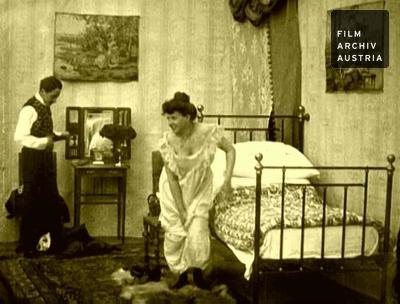 >> View collection Between 1906 and 1910, Saturn, a Vienna-based company, produced a number of erotic films, which were the first fiction films produced in a continuous manner in the Habsburg Empire. Saturn produced films with erotic content only – and that was how it advertised itself in different trade publications, publicizing its films in a printed catalogue, very similar to the French Pathé productions, which Saturn sometimes remade in an adult manner.
>> View collection Between 1906 and 1910, Saturn, a Vienna-based company, produced a number of erotic films, which were the first fiction films produced in a continuous manner in the Habsburg Empire. Saturn produced films with erotic content only – and that was how it advertised itself in different trade publications, publicizing its films in a printed catalogue, very similar to the French Pathé productions, which Saturn sometimes remade in an adult manner.
 >>View collection Filmoteca Española presents a selection of documentaries, newsreels and non-fiction movies showing the Spanish daily city and country life during the second decade of the 20th century. Amateur movies are also included. Newsreels include international news of WWI (The Battle of the Somme, Marshall Von MacKensen advancing on Dobrudja… and more).
>>View collection Filmoteca Española presents a selection of documentaries, newsreels and non-fiction movies showing the Spanish daily city and country life during the second decade of the 20th century. Amateur movies are also included. Newsreels include international news of WWI (The Battle of the Somme, Marshall Von MacKensen advancing on Dobrudja… and more).
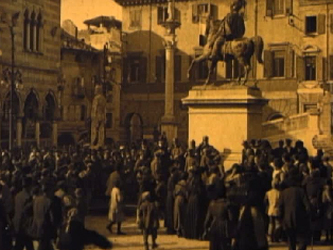 >> View collection FCI gives access to two collections: Films by Luca Comeria and treasures of Italian Silent film from the period of the First World War. The collection of films shot by Luca Comerio, a pioneer of Italian cinema, covers a period from the beginning of the 20th century until about 1920 and consists of over 30 works, including documentaries, excerpts and short comedy sketches.
>> View collection FCI gives access to two collections: Films by Luca Comeria and treasures of Italian Silent film from the period of the First World War. The collection of films shot by Luca Comerio, a pioneer of Italian cinema, covers a period from the beginning of the 20th century until about 1920 and consists of over 30 works, including documentaries, excerpts and short comedy sketches.
 >> View collection IWM has an extensive collection relating to the First World War including diaries and letters, works of art, photographs, three dimensional objects, books, pamphlets and film. The Film Archive holds around 250 hours (projected at 18fps) of First World War material. The collection illustrates all aspects of the conflict, both at home and on the fighting fronts.
>> View collection IWM has an extensive collection relating to the First World War including diaries and letters, works of art, photographs, three dimensional objects, books, pamphlets and film. The Film Archive holds around 250 hours (projected at 18fps) of First World War material. The collection illustrates all aspects of the conflict, both at home and on the fighting fronts.
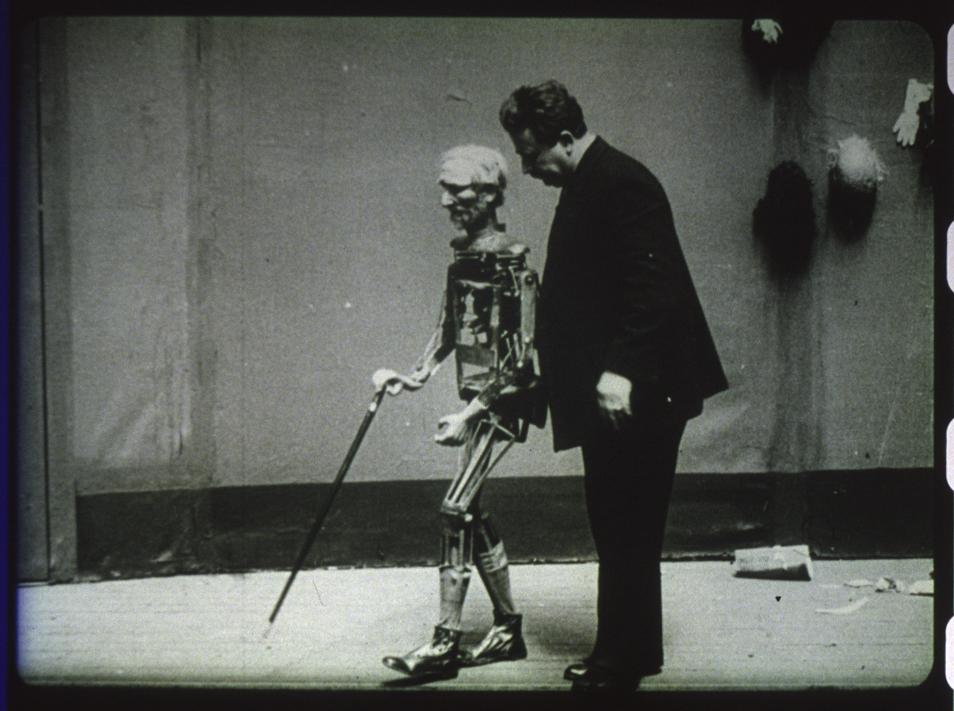 >>View collection CulturArts-IVAC contributes a feature film collection that reflects the disadvantageous impact of the war in the film production of a non-belligerent country like Spain. Three melodramas starring the great actress Margarita Xirgu and one more starring the exotic dancer Tortola Valencia show the impossibility of the Spanish film industry, then led by Barcelona-based producers, for taking advantage of those exceptional circumstances.
>>View collection CulturArts-IVAC contributes a feature film collection that reflects the disadvantageous impact of the war in the film production of a non-belligerent country like Spain. Three melodramas starring the great actress Margarita Xirgu and one more starring the exotic dancer Tortola Valencia show the impossibility of the Spanish film industry, then led by Barcelona-based producers, for taking advantage of those exceptional circumstances.
 >> View collection EFG presents the complete collection of 700 Finlandia-Katsaus newsreels produced between 1943 and 1964. When they came into being with WW II dragging on, the popular “from the front” newsreels produced by the Defence Forces began to lose credibility. As a counterweight to militaristic descriptions of the fighting, they focused on civilian subjects and on raising morale on the home front. As the austerity of the immediate post-war years receded, leisure and private consumption surfaced as themes in the newsreels. The story of the blue-and-white Finlandia Newsreels came to an end in 1964, when the old law supporting documentary shorts before feature films was scrapped, and Finnish television cemented its position as the national channel for news.
>> View collection EFG presents the complete collection of 700 Finlandia-Katsaus newsreels produced between 1943 and 1964. When they came into being with WW II dragging on, the popular “from the front” newsreels produced by the Defence Forces began to lose credibility. As a counterweight to militaristic descriptions of the fighting, they focused on civilian subjects and on raising morale on the home front. As the austerity of the immediate post-war years receded, leisure and private consumption surfaced as themes in the newsreels. The story of the blue-and-white Finlandia Newsreels came to an end in 1964, when the old law supporting documentary shorts before feature films was scrapped, and Finnish television cemented its position as the national channel for news.
Collection coming soon! The Cineteca del Friuli holds in its collections a selection of Italian silent films that make up the "Great War Fund" and can be made available to the audience. They include numerous restorations curated by the Cineteca itself over the years, originating from nitrate copies, and various other acquisitions. The fund includes both documentary, newsreels and fictional movies and can be divided into three groups:
I. films about the war in Libya, that Italy fought between 1911 and 1912 against the Ottoman Empire and a forerunner of the First World War.
Both documentaries and fictional films want to bolster the Italian military intervention in Tripolitania and Cyrenaica and show the superiority of the Italian military.
 >> View collection The Kinemathek Bern provides ten films by the well known photographer and documentarian Kurt Blum (1922 – 2005). Blum followed in his work high aesthetic standards and gained numerous international awards.
>> View collection The Kinemathek Bern provides ten films by the well known photographer and documentarian Kurt Blum (1922 – 2005). Blum followed in his work high aesthetic standards and gained numerous international awards.
 >> View collection The selection of around 1,000 film stills covers the period from the beginnings of Hungarian cinema to 1947 and includes early films of world famous directors such as Alexander Korda and Michael Curtiz (Mihály Kertész).
>> View collection The selection of around 1,000 film stills covers the period from the beginnings of Hungarian cinema to 1947 and includes early films of world famous directors such as Alexander Korda and Michael Curtiz (Mihály Kertész).
 >> View collection Magyar Nemzeti Filmarchívum contributes approx. 1,200 film posters, which provide an overview of the Hungarian poster art from the beginnings of Hungarian cinema in 1900 to the 1990s.
>> View collection Magyar Nemzeti Filmarchívum contributes approx. 1,200 film posters, which provide an overview of the Hungarian poster art from the beginnings of Hungarian cinema in 1900 to the 1990s.
 >> View collection The National Cinema Museum in Turin proposes online a series of fiction and documentary films preserved in its collection.
>> View collection The National Cinema Museum in Turin proposes online a series of fiction and documentary films preserved in its collection.
 >> View collection The Czech National Film Archive makes eight Czech feature films from the silent film era available via EFG. An overview of the history of the Czech documentary film provides the collection "Czech Documentary Films". Up to 200 films from 1898 to 1928 can be viewed on EFG.
>> View collection The Czech National Film Archive makes eight Czech feature films from the silent film era available via EFG. An overview of the history of the Czech documentary film provides the collection "Czech Documentary Films". Up to 200 films from 1898 to 1928 can be viewed on EFG.
>> View collection The NFA film collection contains newsreels, documentary and feature films, produced in the period 1914 – 1934. The most interesting part of the collection includes the images of Czechoslovak volunteers and legionnaires fighting in the Russian, French and Italian army. However, we can find here also shots mapping a situation behind the front (war’s supplying, testing of explosives, celebrations), depicting results of war (army hospitals with injured soldiers, return of soldiers after the end of the conflict) and images of activities revitalising collective memory on the World War One (unveiling of monuments to the memory of victims of the Word War One).
 >>View collection Via the EFG, the Czech National Film Archive gives access to photos to Czech feature films until 1920. A lot of films from this period are considered to be lost and the provided photos are a unique sources documenting the visual form of the film. The selected photos belong to the Czech Film Archive's huge photo collection covering Czech feature films from as early as 1898 until the end of the nationalised film production in 1991. The majority of photos are black and white to both silent and sound films.
>>View collection Via the EFG, the Czech National Film Archive gives access to photos to Czech feature films until 1920. A lot of films from this period are considered to be lost and the provided photos are a unique sources documenting the visual form of the film. The selected photos belong to the Czech Film Archive's huge photo collection covering Czech feature films from as early as 1898 until the end of the nationalised film production in 1991. The majority of photos are black and white to both silent and sound films.
 >> View collection The state-financed Cultural Souvenir Films were produced by The National Film Board of Norway (established in 1948), and were part of a public enlightenment programme of the new social democracy, where old Norwegian customs were central to rebuilding a national identity after WWII. The Cultural Souvenir films were made primarily for educational purposes, with the aim of distributing knowledge about traditional Norwegian crafts and ways of living – for example how to make national costumes, brown cheese, or skis.
>> View collection The state-financed Cultural Souvenir Films were produced by The National Film Board of Norway (established in 1948), and were part of a public enlightenment programme of the new social democracy, where old Norwegian customs were central to rebuilding a national identity after WWII. The Cultural Souvenir films were made primarily for educational purposes, with the aim of distributing knowledge about traditional Norwegian crafts and ways of living – for example how to make national costumes, brown cheese, or skis.
 >> View collection On December 14, 1911, Roald Amundsen, accompanied by four men, won the race to reach the South People. One of the most important documents from this expedition is The South Pole Film, one of four documents from Norway included on the UNESCO international register for the Memory of the World. The South Pole Film is actually three films - three slightly different versions for the Norwegian, English and German markets that vary somewhat in length, and feature intertitles in the three different languages.
>> View collection On December 14, 1911, Roald Amundsen, accompanied by four men, won the race to reach the South People. One of the most important documents from this expedition is The South Pole Film, one of four documents from Norway included on the UNESCO international register for the Memory of the World. The South Pole Film is actually three films - three slightly different versions for the Norwegian, English and German markets that vary somewhat in length, and feature intertitles in the three different languages.
 >> View collection This collection of more than 90 commercial films dates from a period of prosperity in Norway - a period when social differences diminished and most people could afford to purchase the products advertised for in this collection: clothes, vehicles of transportation, household appliances, and more. Today, these films constitute entertaining and charming documents of their time, aesthetically, and in the attitudes, language and gestures.
>> View collection This collection of more than 90 commercial films dates from a period of prosperity in Norway - a period when social differences diminished and most people could afford to purchase the products advertised for in this collection: clothes, vehicles of transportation, household appliances, and more. Today, these films constitute entertaining and charming documents of their time, aesthetically, and in the attitudes, language and gestures.
 >> View collection Oil was found in the Norwegian sector of the North Sea in 1969, the same year man first walked on the moon. The film and video material in the Ekofisk collection is characterized by the technological enthusiasm and optimism typical of the period. The Phillips Petroleum Company in Norway followed the American method of filming their work and projects, an essential part of their training and documentation. The Ekofisk films are unique documents from the pioneering period in the North Sea. The films were used for presentations, information, documentation, and promotion.
>> View collection Oil was found in the Norwegian sector of the North Sea in 1969, the same year man first walked on the moon. The film and video material in the Ekofisk collection is characterized by the technological enthusiasm and optimism typical of the period. The Phillips Petroleum Company in Norway followed the American method of filming their work and projects, an essential part of their training and documentation. The Ekofisk films are unique documents from the pioneering period in the North Sea. The films were used for presentations, information, documentation, and promotion.
 This collection presents a selection of the silent film material in the National Library of Norway. The collection includes Norway’s earliest extant fiction film: Under forvandlingens lov ( Under the law of transformation ) directed by Halfdan Nobel Roede in 1911. The collection also includes several travelogues, amateur films, orphan works, and more. There are several recordings of Olympic Champion Sonja Henie, before her fame in America and Hollywood – as a 12-year old girl practicing her skills –possibly the earliest moving images of Henie.
This collection presents a selection of the silent film material in the National Library of Norway. The collection includes Norway’s earliest extant fiction film: Under forvandlingens lov ( Under the law of transformation ) directed by Halfdan Nobel Roede in 1911. The collection also includes several travelogues, amateur films, orphan works, and more. There are several recordings of Olympic Champion Sonja Henie, before her fame in America and Hollywood – as a 12-year old girl practicing her skills –possibly the earliest moving images of Henie.
 In many of the neutral countries, daily life continued more or less unaffected by the war. The films from the Nasjonalbiblioteket (National Library of Norway) illustrate the quotidian life in Norway during the years 1914-1918, far removed from the trenches. However, information about the war reached Norway through international newsreels from companies such as Gaumont, Éclair and Pathé, often with Norwegian intertitles - these items composes a part of the Norwegian contribution to the EFG1914 project.
In many of the neutral countries, daily life continued more or less unaffected by the war. The films from the Nasjonalbiblioteket (National Library of Norway) illustrate the quotidian life in Norway during the years 1914-1918, far removed from the trenches. However, information about the war reached Norway through international newsreels from companies such as Gaumont, Éclair and Pathé, often with Norwegian intertitles - these items composes a part of the Norwegian contribution to the EFG1914 project.
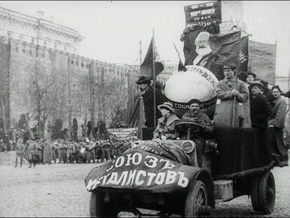 >> View collection The Kinonedelja (Kino-Week) newsreels constitute the first films of Dziga Vertov. A total of 43 issues, each containing an average of 5 to 7 different items, were produced between May 1918 and June 1919. Vertov joined the newsreel’s ranks as a secretary but by the fall of 1918 had taken on full responsibility for the series, defining the content and structure of each issue. In some cases, Vertov even functioned as director of the newsreels.
>> View collection The Kinonedelja (Kino-Week) newsreels constitute the first films of Dziga Vertov. A total of 43 issues, each containing an average of 5 to 7 different items, were produced between May 1918 and June 1919. Vertov joined the newsreel’s ranks as a secretary but by the fall of 1918 had taken on full responsibility for the series, defining the content and structure of each issue. In some cases, Vertov even functioned as director of the newsreels.
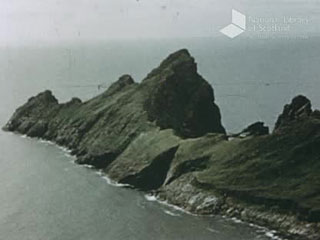 >> View collection The selection of films from the National Library of Scotland on European Film Gateway are mostly non-fiction, and include documentaries, newsreels, educational material, television, public information films, industrial, advertising and promotional material.
>> View collection The selection of films from the National Library of Scotland on European Film Gateway are mostly non-fiction, and include documentaries, newsreels, educational material, television, public information films, industrial, advertising and promotional material.
 Deutsch
Deutsch English
English Čeština
Čeština Dansk
Dansk Français
Français Italiano
Italiano Lietuvių
Lietuvių Magyar
Magyar Nederlands
Nederlands Norsk
Norsk Português
Português Suomi
Suomi
